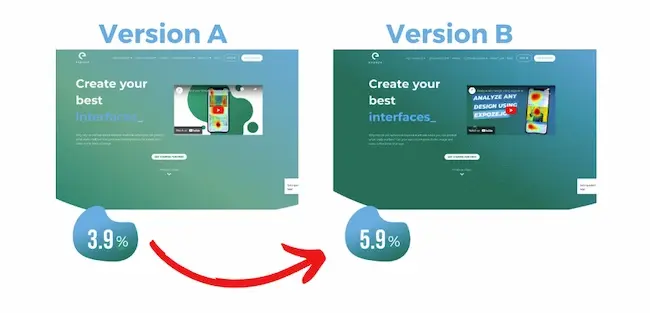As more and more businesses expand their operations, products, and services into new global markets, usability testing (UT) has gained prominence in the localization and translation industries as a critical step in ensuring that products appeal to a wide range of global consumers.
Usability testing sets out to identify potential issues that could impact the user experience (UX) for different target audiences, thus enabling more effective deployment of localization efforts. With Forrester Research reporting that for every $1 spent on UX, including usability testing, businesses can see a return of $100 through better conversion rates and enhanced customer satisfaction, it’s clear that the impact of testing and UX optimization is significant.
This blog will explore why usability testing is becoming such an essential tool for businesses looking to deepen market penetration. It will highlight the latest industry trends, key benefits, practical applications, and best practices, so businesses can strengthen their global prospects.
- What is usability testing?
- When is usability testing needed?
- Why usability testing is on the rise in localization
- Best practices for usability testing in localization
- Accelerate your market entry with usability testing
- To find out how Clearly Local can help your business reach global markets effectively and efficiently, email us at info@clearlyloc.com or leave us a message, and we’ll help you get started.
What is usability testing?
While the definition of usability testing may sound straightforward—the evaluation of the usability or ease of use of a company’s products or services—it is far more complex in the context of localization.
In localization, usability testing involves the evaluation of how well a localized product (this could be a website, mobile app, software, or digital content) is able to perform in a specific market or language. Real users in the target market engage with the product, with the goal of ensuring the localized version is as user-friendly, culturally appropriate, and accessible as possible to the target audience.
The improvements that come as a result of this are important, as a study conducted by the Common Sense Advisory revealed that 56% of consumers are more likely to purchase from websites that offer full localization.

When is usability testing needed?
Throughout the development of products, it is recommended to run several rounds of usability tests, as this iterative process helps businesses pinpoint usability issues or user pain points early on in the product’s development, thus allowing for more time to address these issues.
The following are the stages at which usability testing is typically deployed:
- Prototyping stage
- Prior to product/service launch
- Product redesign process
- Regular checks
Why usability testing is on the rise in localization
1. Increased globalization of products
The UN Conference on Trade and Development reports that there have been positive trends in global trade in 2024. Global trade value for goods was expected to increase by 1% quarter-over-quarter, adding an estimated $250 billion to goods trade, while the trade value for services was projected to see a 1.5% increase that added about $100 billion to services trade.
These strides in global trade show an uptrend and help explain why more businesses are putting greater emphasis on adapting their products and services for diverse audiences as they expand into international markets. By adopting solutions such as usability testing, these businesses are able to ensure that their localized products are intuitive, accessible, and aligned with local expectations.
Walmart Canada, in particular, enhanced their mobile app through user testing, resulting in a 20% boost in mobile purchases, which demonstrated the direct impact of improved usability on sales performance.

Usability testing has also become critical for complex localization projects such as e-commerce sites, software, and multimedia content, allowing businesses to test speakers of different languages to ensure that the content is optimized for usability and not just translation.
2. Demand for improved user experience for global audiences
In the past, localization was chiefly focused on ensuring linguistic accuracy, but market trends are forcing global businesses to rethink their strategies, as market competition and user demand for better experiences are driving the need to think beyond translation.
Conducting regular usability tests and gathering user feedback in this way enables companies to make iterative improvements and have ongoing optimization. Research by HubSpot shows that UX improvements and well-designed interfaces can boost click-through rates by 25%. These improvements enhance a company’s ability to deliver products, interfaces, navigation, and overall experiences that are intuitive and user-friendly for all users, regardless of their diverse backgrounds.
For instance, a mobile company may set out to deploy a new feature that functions well in the product’s home market. Through usability testing with users in the target market, it is then able to discover potential pitfalls, such as the proper function of the new feature being contingent on the availability of a 5G network, thus hindering functionality if the target country has a slow 5G rollout.

3. Cultural sensitivity and quality assurance
Users from different regions have varying expectations, preferences, and habits that are constantly changing due to evolving cultural trends, geopolitical shifts, and technological advancements. To find success with these consumers, businesses should be able to meet their needs within their varied contexts.
What may work well in the US and Europe may not work as well in Asia, but beyond that, even within the same continent, what works in Italy may not work in Sweden, and what works in Singapore may not be what applies in neighboring Malaysia.
Cultural differences play a significant role in the way users perceive or interact with a business’s products or content. Usability testing empowers businesses to be able to identify cultural mismatches or localization issues that may not be apparent to translators and developers but may cause misunderstandings and discomfort among users.
For instance, tests with real users on the ground can help a brand understand that certain colors, symbols, images, or phrases may be interpreted differently in the target market’s cultural context, preventing costly blunders caused by unintended meanings.
This process of going over content for different target users involves checking whether elements such as layout, buttons, fonts, and overall design are intuitive and functional and can serve as an effective quality assurance tool, as testing can spot issues that traditional linguistic QA may not address.

4. Facilitates better market penetration
Investing in usability can lead to better return on investment for a business’s localization efforts and faster time to market. Research by McKinsey reveals that agile, design-driven companies that incorporate user testing and feedback into their development processes bring products to market 40% faster, thanks to improved initial designs and reduced revisions.
Localized products and services that are easier to use and meet the needs of the target audience are more likely to drive customer satisfaction, engagement, and, in turn, revenue. A study by Nimdzi Insights found that businesses that invest in localization achieve 20–30% growth in revenue from international markets. Poorly localized products, on the other hand, can lead to higher bounce rates, negative reviews, and, ultimately, lost business opportunities.
For example, different languages require unique layouts to accommodate text expansion or different reading directions. This is particularly true for Arabic and Hebrew, which use right-to-left scripts. Not identifying this and just breaking into the market with merely translated content can lead users to perceive your business as unaligned with the local market, thus impeding penetration efforts.
Best practices for usability testing in localization
In order to ensure that your products not only function well bould be an ongoing process. Regular usability testing throughout the product lifecycle is recommended to maintain quality, especially when adding new features or expanding into new markets.
Our products not only function well but also resonate with local users, here are some best practices that your business can adopt in your usability testing process:
- Use native speakers: Testing should ideally be conducted by native speakers familiar with both the language and the culture, as they will be more sensitive to linguistic nuances and cultural expectations.
- Test in context: Conduct usability tests in the environment where users will interact with the product, such as on local devices or under local conditions, to gather the most accurate feedback.
- Focus on real tasks: Scenarios should reflect how users will actually use the product in real life, not just abstract tasks.
- Have a continuous feedback loop: Localization should be an ongoing process. Regular usability testing throughout the product lifecycle is recommended to maintain quality, especially when adding new features or expanding into new markets.
Accelerate your market entry with usability testing
Usability testing goes beyond linguistic translation and encompasses the cultural, functional, and user-experience aspects of localization. As global markets continue to grow and diversify, it is imperative for you to partner with a service provider capable of helping you deploy a successful localization strategy.
Clearly Local has developed effective user testing and product localization testing solutions in collaboration with pioneering app and software companies to help equip your business’s products for rapid market entry, ensuring a seamless user experience and a strong competitive edge.
With innovative tools like easyLT, your localization testing process is streamlined, and you are provided with accurate in-context linguistic usage, error-free reporting, and customization. Accelerate your market readiness and penetration with usability testing services that not only ensure that your launch is timely but that it’s impactful.



